Introduction to Corrosion
Blog
Last Updated 2024
What Is Corrosion?
Corrosion Basics
Corrosion is an electrochemical process that returns refined metals to their natural oxide states. The most familiar and widespread example is of iron or steel forming rust. Corrosion leads to billions of dollars in infrastructure and product damage every year. We often focus on Atmospheric Corrosion, a process that takes place typically outdoors in a film of moisture on a metal surface. The moisture film may be so thin that it is invisible to the naked eye.
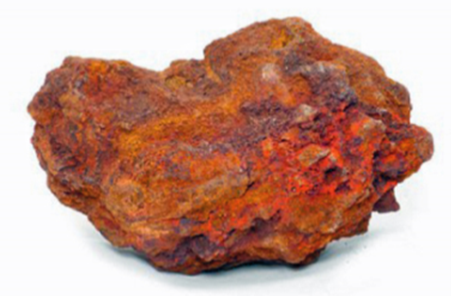
Corrosion affects a broad range of materials and industries – effectively, any metallic products placed in service outdoors or otherwise exposed to the elements. This includes paints and coatings, additives and colorants, architectural and building materials, some bare metals, electronics, and an array of automotive components.
Forces of Corrosion
Corrosion is a chemical process that is typically caused by a combination of three environmental forces: water, oxygen, and ionic species.
Water in the form of relative humidity, rainfall, and dew (condensation) is fundamental to nearly all corrosive behavior. The more time materials outdoors are wet, the more they tend to corrode, generally speaking. Very dry products and assemblies tend not to corrode. Additionally, different values of relative humidity can cause different types of corrosive behavior, especially for dissimilar metals in contact with each other.
Oxygen is a key driver of corrosive behavior, as it initiates many of the reduction reactions that are fundamental to corrosion. Oxygen is, of course, readily available in the atmosphere, and also dissolved in water.
Ionic species, especially chlorides and sulfides, can play a major role in corrosion as well. The chemistry of corrosion is very complex, as a variety of corrosion products can form besides well-known simple oxides like red rust. This is one reason why acidic environments tend to promote higher rates of corrosion than atmospheres with neutral pH. Additionally, salts will “deliquesce,” or form liquid solutions at lower relative humidity values, which can increase materials’ time of wetness and corrosion rates.
Types of Corrosion
A variety of different kinds of corrosion can occur in outdoor service environments. This includes:
- Free Corrosion, or General Corrosion, over the surface of a material
- Galvanic Corrosion, occurring when two different metals are in contact in the presence of liquid water
- Crevice Corrosion, localized corrosion in areas with limited oxygen access relative to nearby areas
- Pitting Corrosion, small holes that typically form when a protective barrier fails
- Filiform Corrosion or Underfilm Corrosion, which develops underneath a coating and can lead to significant delamination
Protecting Against Corrosion
A variety of strategies are used to slow or stop corrosion of metals. Indeed, most corrosion testing performed outdoors and in Q-FOG cyclic corrosion testers is to evaluate the effectiveness of these prevention strategies. These include:
- Paint – organic coatings that represent probably the most common anti-corrosion approach
- Passivation – thin oxide layers that form a barrier between the metal and atmosphere
- Conversion Coatings – chemical pretreatments that form protective surface layers on metals
- Galvanizing – depositing or plating a second metal on top of the base metal that is to be protected
- Mechanical Design – constructing products and assemblies to avoid geometry-related corrosion effects like crevices
The synergistic effects of water, oxygen, and ionic species in outdoor environments are what result in corrosion of materials. How can you ensure your products will last outdoors? The answer is: corrosion testing.
How Do I Perform Corrosion Testing?
There are two fundamental types of corrosion testing: natural outdoor testing, and accelerated laboratory testing. These two test types are complementary and, performed together, make up a complete corrosion test program. Q-Lab can help you determine the best comprehensive test plan for your products and materials.
Outdoor Testing
Natural outdoor corrosion testing is an excellent way to establish the corrosion resistance of your products when exposed to outdoor environments. Testing is typically done near the ocean, since salty marine environments provide the harshest conditions in which to evaluate corrosion protection. Different geographic regions very widely in the corrosivity of their atmospheres, as illustrated by the ISO Corrosivity Category Estimation Tool (ICCET), so testing in non-marine environments is also of value. Corrosion testing is also often performed at automotive “proving grounds,” where cars and trucks are put to use in a realistic service and performance environment.
Natural outdoor corrosion is the most accurate way to understand the durability of materials outdoors and is key to a comprehensive corrosion testing program. Outdoor corrosion testing, just like for weathering, can qualify or validate your accelerated lab testing with outdoor data – in other words, can help you “test the test.”
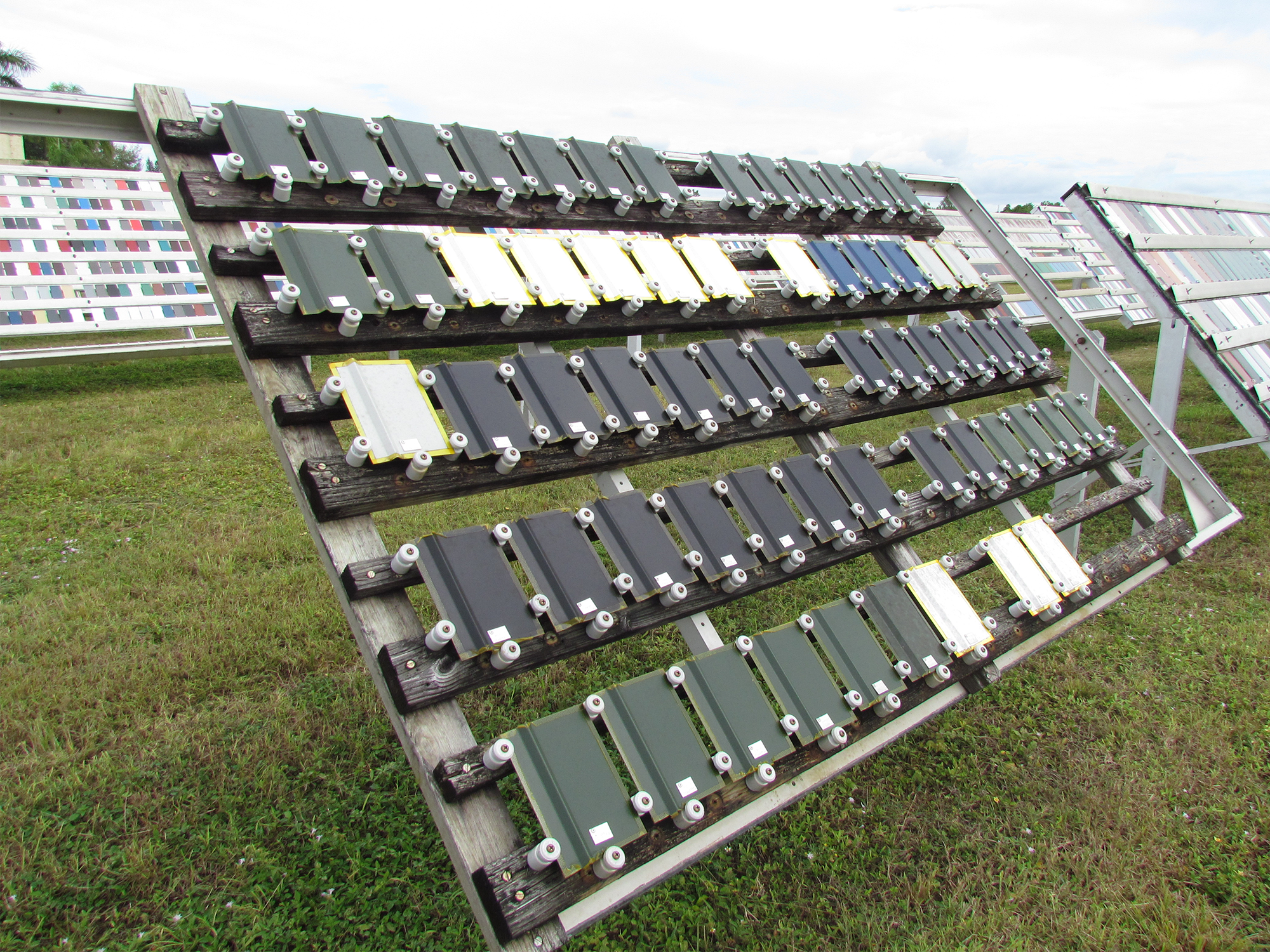
Accelerated Laboratory Testing
The most common way to test products’ corrosion resistance is in laboratory test chambers. Accelerated laboratory corrosion testing can accelerate the forces of corrosion in a controlled lab environment, to provide faster results about corrosion resistance. For a summary, see our webinar Modern Corrosion Testing.
Accelerated corrosion testing is fast, repeatable, and convenient, and is great for quality control, qualification, and research & development. It is a “tool for directional decision-making,” to help you make better decisions about things like:
- What ingredients to include or not include in a paint or coating
- Whether a lot or batch is OK to ship to customers
- What passivation or plating vendors to buy from
- What processing and manufacturing parameters should be selected
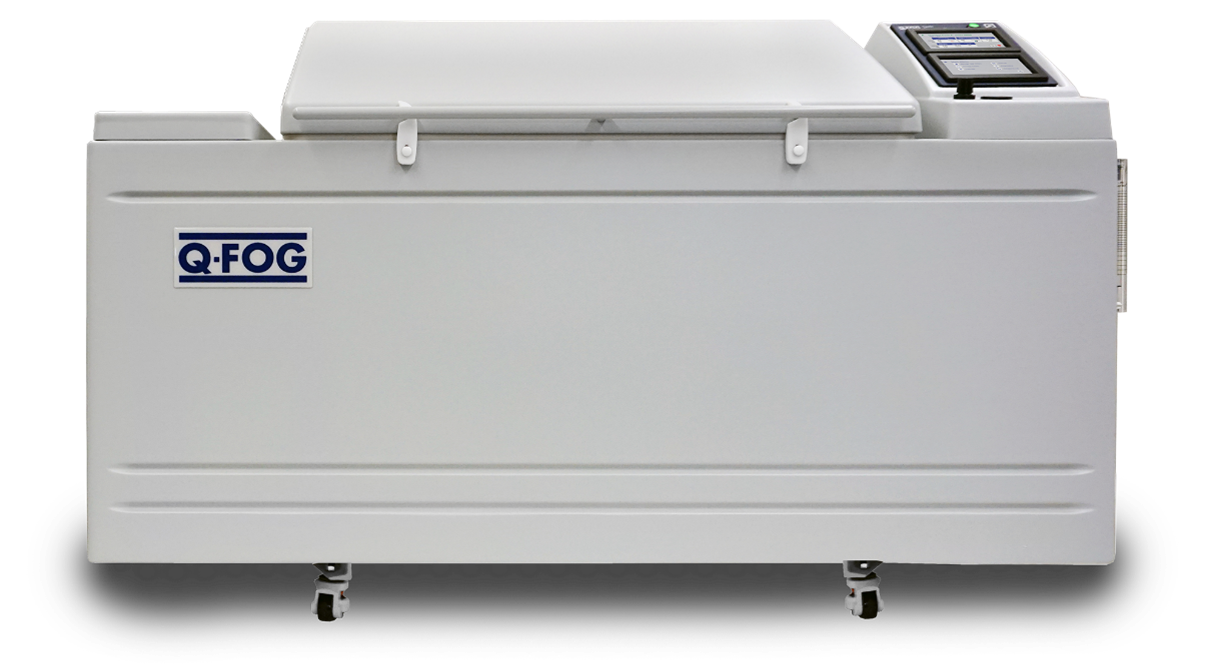
Salt Spray Testing
A wide variety of accelerated corrosion test protocols are available for testing, all of which can be met by selecting the proper model of Q-FOG Corrosion Tester. The simplest and oldest of these tests are referred to as continuous salt spray tests. The most well-known of these tests are ASTM B117 and ISO 9227, which expose specimens to a salt mist, or fog, at moderately elevated temperatures from 35-50 °C. These tests do not feature any cyclic wetting or dry-off steps, and can be performed by the most economical Q-FOG model – the Q-FOG SSP, as well as the more advanced CCT and CRH testers. The most commonly-performed salt spray tests use a neutral electrolyte solution, often dilute sodium chloride (NaCl). Salt spray tests may instead use acidified salt solutions to conduct faster, harsher test results on very durable coatings.
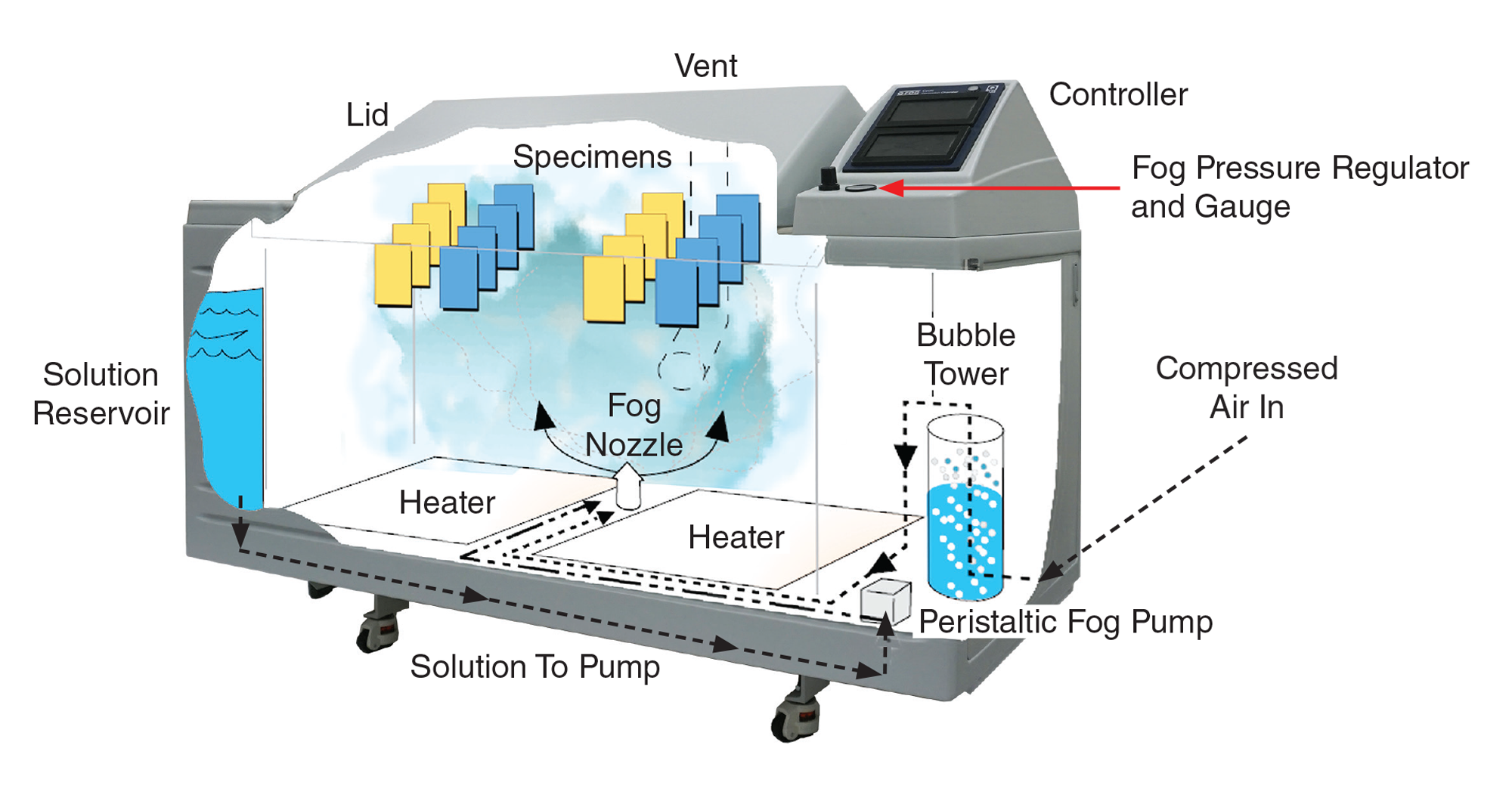
Cyclic Corrosion
Cyclic corrosion testing introduces additional drying and high-humidity wetting steps, to provide a better laboratory simulation of natural atmospheric corrosion. Research indicates that test results from cyclic testing are similar to those obtained outdoors in resulting structure, morphology, and relative corrosion rates. One of the earliest cyclic tests is the Prohesion test, which alternates salt fog with drying and which can be performed by all Q-FOG testers.
Other cyclic tests, many of which were developed by automotive organizations and OEM’s, introduced saturating humidity, or wetting steps, intended to quickly reinitiate corrosion following drying steps. These tests can be performed by the Q‑FOG CCT model, which includes a water vapor generator, as well as by the advanced CRH model.
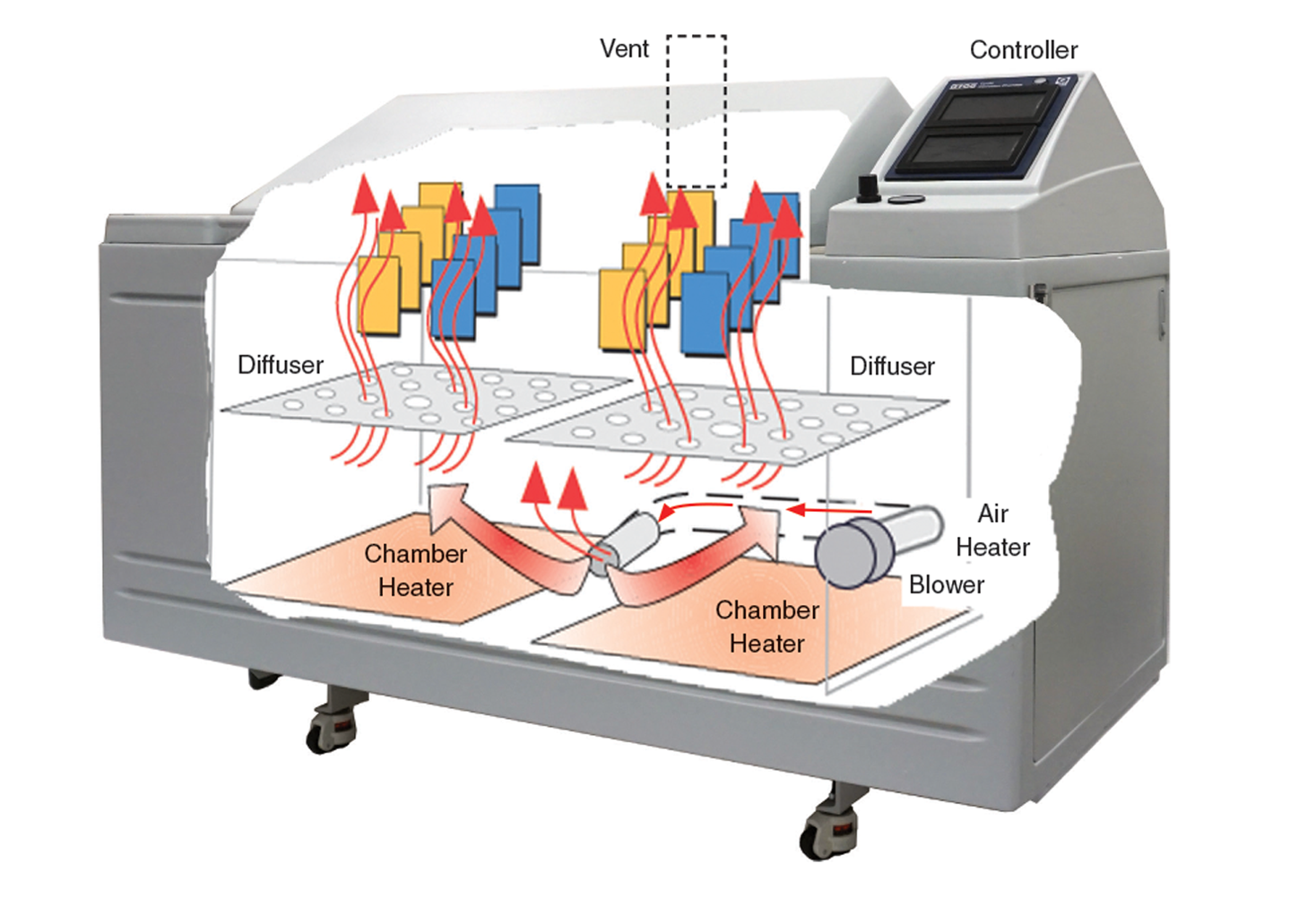
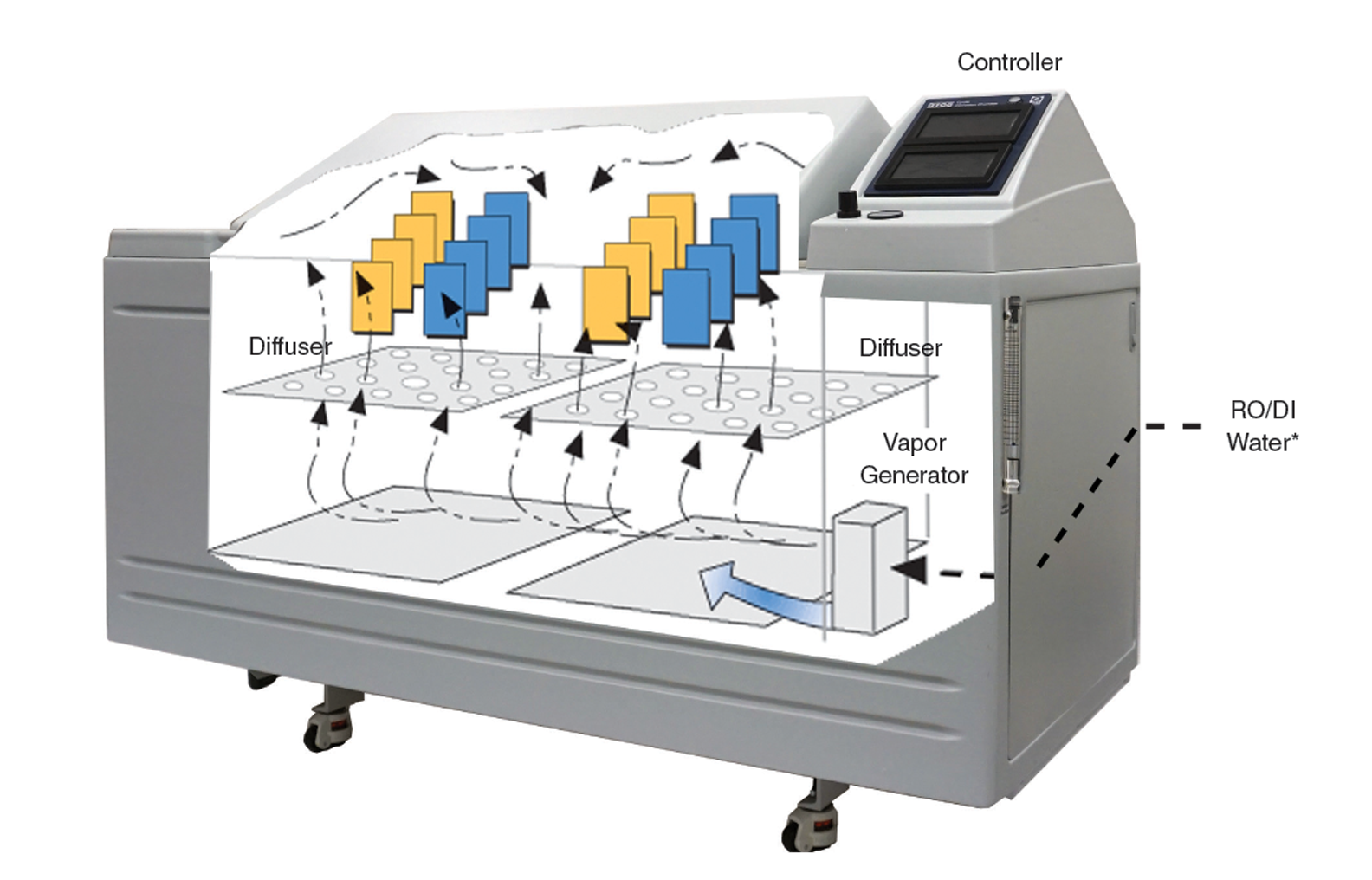
Modern Automotive Corrosion Testing
In recent years, corrosion testing technology has advanced significantly, led by automotive OEM’s eager to develop tests with greater realism and correlation to actual in-service performance. These tests can typically only be met by the Q-FOG CRH tester, which features full relative humidity control, including transitions.
Among the innovations of modern automotive cyclic corrosion tests is the replacement of salt fog with direct salt spray, or shower. This technique applies the solution to test specimens much faster and can reduce significantly the time required for testing.
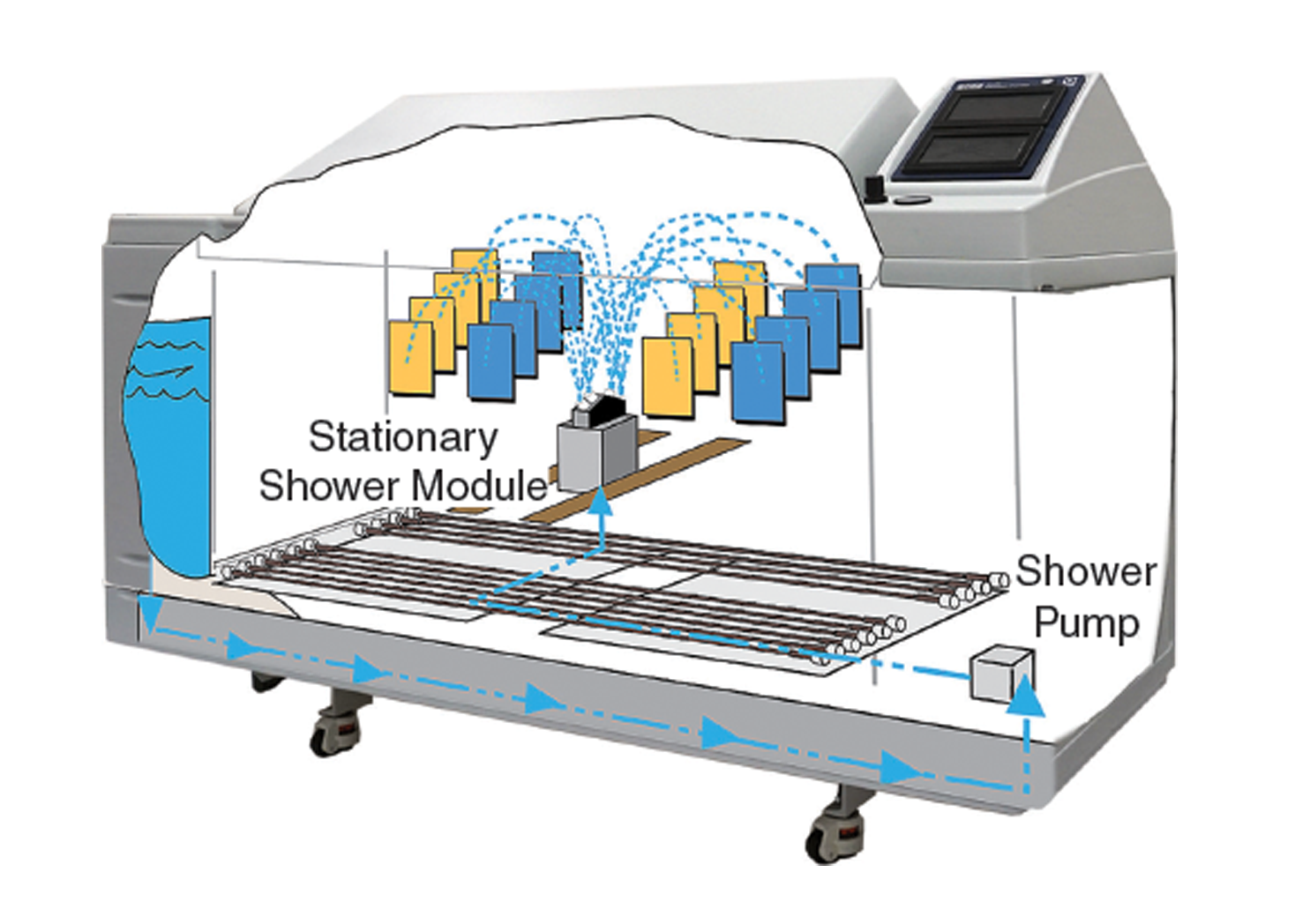

The most significant advance in modern corrosion test equipment, however, is the introduction of precise relative humidity control, including controlled transitions between different test conditions. Previous cyclic tests were only able to test either very dry or very wet conditions, and lacked the ability to transition between those steps in a consistent manner. Those tests therefore did not test for much of the range of corrosion behavior that happens at intermediate values of relative humidity, where outdoor materials actually spend much of their time. The air preconditioner in the Q-FOG CRH enables this control by providing cool, dry air to the test chamber.
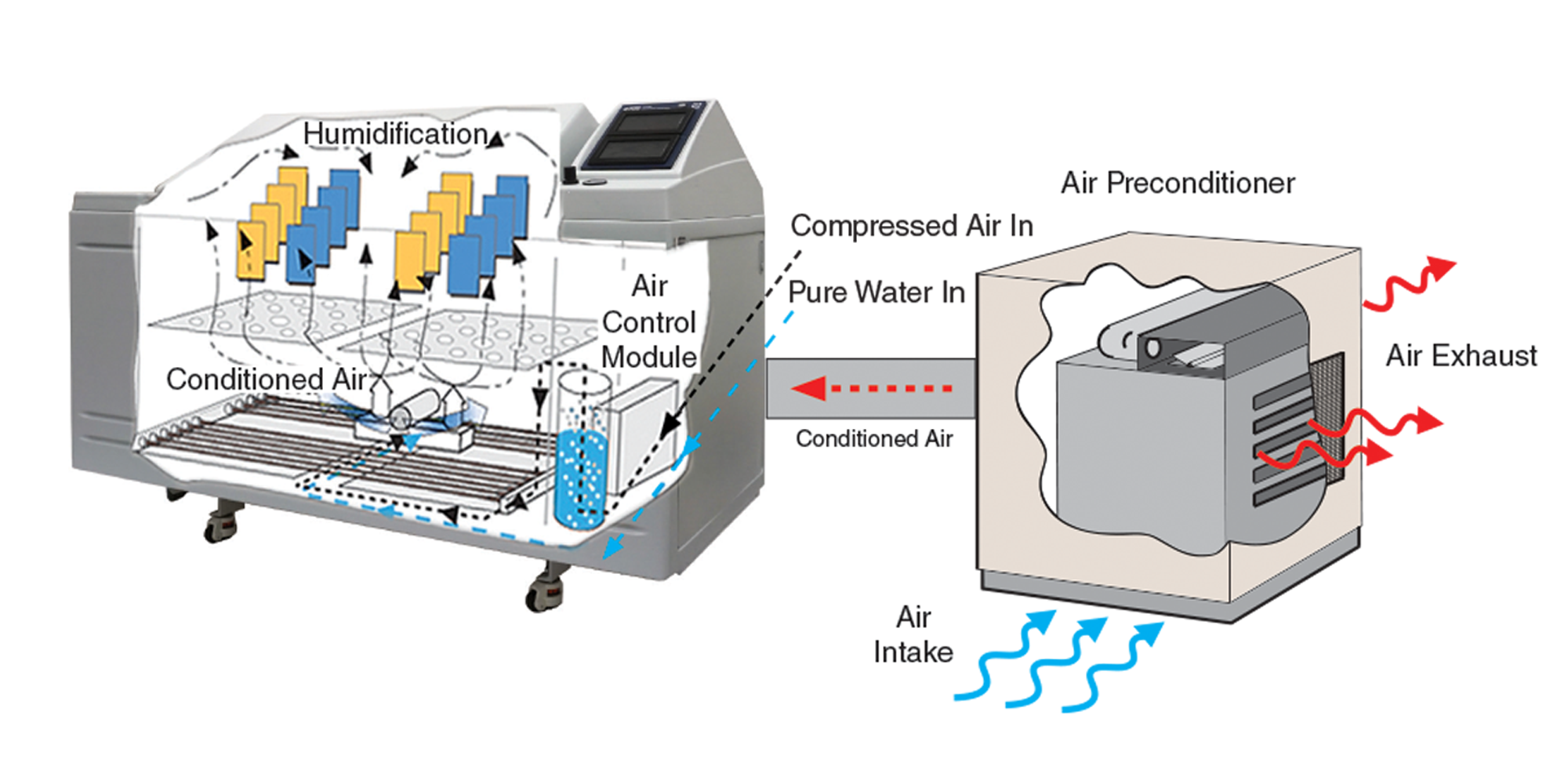
Why Perform Corrosion Testing?
Reasons to Test
At Q-Lab, we often ask the question “Will Your Products Last Outdoors?” and respond with “Don’t Guess When You Can Test!” That said, what are the actual benefits of corrosion testing? Here are just a few:
Improve your product’s durability
Corrosion testing has resulted in drastic increases in the lifetime of many important products. Take, for example, automotive coatings, where corrosion testing has supported developments leading to over a 100% increase in product lifespan.
Save on material costs
The right materials selection can have a crucial impact on product performance – and your bottom line. How much would it save you if you bought raw materials that were 10% cheaper and your performance was unaffected? Proper protective coatings selection can save hundreds of thousands of dollars in some cases, and corrosion testing gives you the confidence to make the right choice.
Avoid catastrophic field failures
On the other hand, how much would it cost you if you bought 10% cheaper raw materials, but it made your product fail in service? Lawsuits and large-scale warranty claims can be very damaging to a company’s profits and reputation. Testing helps avoid such mistakes.
Many more!
Corrosion testing can help you meet customer specifications, enhance your marketplace reputation, verify supplier claims, expand your existing product lines, enter new markets, outpace the competition, and stay ahead of government regulations.
Test Types
It’s important to understand that not all corrosion test types have the same goals. A test program should be developed with a clear understanding of what knowledge is critical to gain. The testing matrix below shows different categories of testing from simplest to most complex:
| Accelerated Test Type | Result | Test Time | Results Compared to |
|---|---|---|---|
| Quality Control | Pass/Fail |
| Material Specification |
| Qualification/Validation | Pass/Fail |
| Reference material or Specification |
| Correlative | Rank-Ordered Data |
| Natural Exposure (Benchmark Site) |
| Predictive | Service Life Acceleration Factor |
| Natural Exposure (Service Environment) |
Most corrosion testing, at least to begin with, is quality control testing – short, defined screening tests for fixed time intervals that generate pass/fail results. Salt spray tests typically fall into this category, as do many of the early cyclic corrosion tests. This is closely related to qualification or validation testing, where a customer’s specification needs to be met in a test in order to gain acceptance. Correlative and predictive testing require outdoor data and therefore are part of a broader test program. These test types also generally require more advanced test protocols, like the controlled RH cycles developed by automotive OEM’s. Correlative testing uses outdoor data as a reference to “rank order” specimens in lab testing – in other words, to determine which are most corrosion-resistant and which are least corrosion-resistant. Predictive testing gives estimates of service life based on lab results, but is highly material-specific, test-specific, and failure mode-specific, and requires lots of outdoor test data.
Correlation
The most common question we receive at Q-Lab is some variation of “how many hours in an accelerated corrosion tester corresponds to (5, 10, 20) years in service?”
The short answer is that there is no simple, general relationship between laboratory and accelerated corrosion testing. The problem is not that we just haven’t developed the perfect corrosion tester yet. No matter how sophisticated or expensive you make your corrosion tester, you still won’t find the “magic number.” The biggest problem is the inherent variability and complexity of outdoor exposure situations, including geography, weather variability, service environment, test conditions, and many more.
However, the rank-order data that can be generated by a comprehensive corrosion test plan is extremely valuable information that can tell you a lot about product durability. At Q-Lab, we’re here to help you get the most out of your testing program with the least possible hassle: it’s why we say that We Make Testing Simple.
